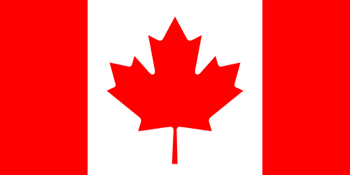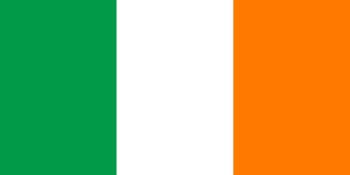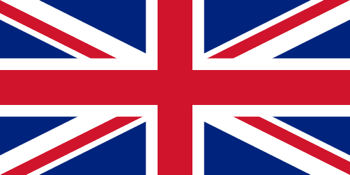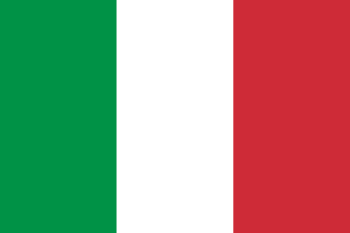In recent weeks, I’ve written about the U.S. gluten-free tax deduction, pros and cons of the system, and a hypothetical example of how your average American gluten-free family might fare. But enough about us. Let’s talk about them. This week I’m exploring how other countries have adopted different strategies to offset the gluten-free premium paid for specialty food products and the financial burden that sometimes entails.
Canada
Like the United States, Canada offers a gluten-free tax deduction for those diagnosed with celiac disease or gluten intolerance and thus on a gluten-free diet for official medical reasons. However, there are some important differences.
In the U.S., the gluten-free premium is lumped in with other eligible out of pocket medical expenses; once those aggregate expenses reach 7.5% of your adjusted gross income, you then become eligible to write off the excess.
Canada, on the other hand, has specific guidelines for the gluten-free tax deduction. As in the U.S. of A., you take the cost of the gluten-free specialty product, subtract the average cost of the conventional glutenous counterpart, and write off the difference. But unlike in the States, there doesn’t appear to be a threshold you must reach before you can start taking the deduction. In Canada, eligible foods include the usual suspects—gluten-free bagels, breads, muffins, cereals—but they also include “intermediate items,” naturally gluten-free ingredients such as rice flour and spices that someone with celiac disease uses to prepare gluten-free foods.
But things can also get complicated in the land of the maple leaf. For example, if several people consume the gluten-free food, only the costs related to the portion of the food consumed by the person with celiac disease are allowed to be written off for the medical tax credit. I can just imagine the potential headache this would cause for a mixed family, where some members are gluten-free because of celiac disease and some are gluten-free because the family eats all their meals together. Plus, unlike Italy (more on that in a moment), Canada doesn’t allow you to write off the extra time it takes to find and prepare gluten-free foods.
Finally, Canada’s record-keeping requirements are quite similar to the U.S.—a letter from a medical practitioner that notes both a) a celiac disease diagnosis and b) a gluten-free diet requirement as treatment; plus, keep all your receipts. In true Canadian subtlety and politeness, the Canada Revenue Agency notes that you should keep this supporting documentation not in the event of an audit, but rather “in case we ask to see them at a later date.” Makes it sound so civil and non-threatening, doesn’t it?
Ireland
In the Republic of Ireland, gluten-free foods fall under what’s known as a Drug Payment Scheme. (Makes the national government sound like a dealer, no?) According to the Health Service Executive, a national agency providing healthcare and social services for everyone living in the country, the Payment Scheme sets a maximum monthly out of pocket that an individual or family would pay for prescription drugs, other medicine, and even certain appliances used by that person and his or her family. As of December 31, 2012, that out of pocket limit was 144 Euros, or about $194 under current exchange rates.
The Coeliac Society of Ireland notes that gluten-free foods can be prescribed under this system. Typically, your general practitioner would prescribe specific gluten-free foods from a General Medical Services list. The list includes items such as bread, rolls, bread mixes and flour, pasta, breakfast cereals, pizza bases, and baking powder. You’d then pick up your prescribed gluten-free foods not at the supermarket, but rather at the pharmacy. (You could also buy other GF foods from other sources, though they wouldn’t be covered under the prescription plan.)
United Kingdom
Like its neighbor Ireland, the United Kingdom also offers gluten-free foods based on a prescription coverage plan. According to Coeliac UK, a major national nonprofit, your general practitioner would usually be the one to write the prescription, while your pharmacist would be the one to fill it. However, in some parts of the U.K., you can do one-stop-shopping through your pharmacist.
As for what gluten-free foods you can get on prescription, that comes via an approved list determined by the Advisory Committee on Borderline Substances. Man, if you thought gluten-free foods had a stigma in the U.S., how would you like them to be classified as a borderline substance? At any rate, the ACBS advises the U.K.’s Department of Health, and their list can be found in Coeliac UK’s online Food and Drink Directory.
Now here’s an interesting point: the quantity of GF food you can receive under prescription is largely determined by a recommended number of units per month. For example, 400 g of GF baguettes and 250 g GF pasta would each count as one unit. Your recommended number of allowable units varies by age, sex, and other factors, such as if you’re pregnant or breastfeeding.
In Northern Ireland, Scotland, and Wales, the prescription is free. Yes, you read that correctly. In England, some individuals will qualify for free prescriptions, but most will have to pay. Under a typical scenario, you’d pay 7.65 Pounds for each line item on your prescription. If your gluten-free prescription included four line items (e.g. bread, pizza base, pasta, and crackers), you’d pay roughly 30 Pounds. However, England also offers pre-payment certificates (PPC). You pay, in advance, a set fee for either 3 months or 12 months worth of prescriptions, and the PPC covers all of your prescriptions for that period. The 3-month PPC costs 29.10 Pounds and the 12-month PPC costs 104 Pounds, or about $163. That’s a great deal. Think about it—you pay a one-time fee of $163, and that covers 100% of your gluten-free food prescription for the year. Not bad.
Finally, to Coeliac UK’s credit, they’ve established a strong position on the prescription plan. They believe that offering gluten-free food under a prescription plan is an essential national health service, but they also believe that gluten-free cake mixes and other similar foods shouldn’t be covered under such plans, because they’re not in line with healthy eating recommendations. In fact, to that end, less than two weeks ago the Express and Star ran a story about how the NHS prescription plan in Dudley was scaling back both the amount and range of its gluten-free offerings. It was part of an effort to trim some 1.4 million Pounds from the regional commission’s budget (last year, they had spent about 200,000 Pounds on foods for celiac patients in their district), but when the commission looked for gluten-free foods to cut from the prescription plan, one of the first food categories to go was gluten-free cakes.
Of course, you’d still be able to buy them yourself out of pocket at the store, and an official for the commission even noted that gluten-free products purchased at retail stores were frequently cheaper than the unsubsidized cost of similar products that were part of a prescription plan.
Italy
And last, but not least, Italy, that supposed Shangri-La of gluten-free eating. Unlike many of its other European and North American counterparts, Italy doesn’t go the route of a gluten-free tax deduction or gluten-free prescription food (though gluten-free foods are widely available at pharmacies, rather than markets). Instead, Italy provides a monthly stipend to offset the cost of gluten-free foods for those with celiac disease. The stipend varies by region, but sources I’ve seen note $184 per month and $200 per month.
(That’s potentially up to $2,400 per year the government puts in your pocket to offset the cost of gluten-free foods, a value far exceeding any small tax relief you’d get in the U.S. from spending an equivalent amount of your own money on GF foods, then reducing your taxable income only by that amount which exceeds 7.5% of your AGI.)
Gluten-free foods eligible to be purchased with your stipend are found on a list maintained by the Ministero della Salute (Ministry of Health), and the Ministry has established standards for how a product earns gluten-free designation and inclusion on the list. From what I can gather with the help of Google Translate (my Italian isn’t stellar, despite my Sicilian heritage) the stipend and other measures are implemented in conjunction with the regional chapters of the Italian Celiac Association.
In addition to the stipend, you’re also awarded extra time off work each month to offset the time it takes to find and prepare your gluten-free food. (Is that really necessary?) Plus, schools, hospitals, and other public facilities must provide gluten-free food options.
Why is Italy so aggressive when it comes to such matters? Simple: the “standards for the protection of persons suffering from celiac disease,” a comprehensive set of measures passed in 2005.
Implications
So what does this all mean?
On the one hand, nothing. I simply wanted to offer a detailed and comprehensive look at how countries other than the United States have addressed the issue of providing financial relief associated with the heightened costs incurred via gluten-free specialty foods. On that basic level, this look at Canada, Ireland, the U.K., and Italy is illuminating.
But on the other hand, I have a personal perspective to offer. I question whether giving people extra time off work to find and prepare gluten-free foods is really necessary. I applaud Coeliac UK for taking a stance and saying that certain gluten-free foods shouldn’t be subsidized by the government because they’re not compatible with a healthy diet.
Most importantly, however, I think that these various approaches have serious implications for how we think about our food, our condition (celiac disease or similar), and our health. When food is assigned to you via a prescription, and when you obtain that food from a pharmacy, it changes your relationship to food. I can’t imagine that it doesn’t. Food in some sense becomes a drug, an impersonal treatment. Instead of finding health through diet, you end up treating a disease through a healthcare system. While I think each country has taken laudable steps to meet the needs—financial and otherwise—of its medically gluten-free populations, it also partially makes me sad to see food treated in this way. But that’s just me.
Given the spectrum of “solutions” and potential implications, what’s your take? Are you happy with the U.S. approach? Would you prefer a tactic taken by one of the countries in these examples? Or would some other strategy offer a better resolution? Are you a reader from one of the countries I’ve highlighted in this blog post? If so, please share your experiences!
–Pete




I think this is an interesting comparison – I am American by birth but live in the UK and my coeliac diagnosis came after I moved here. I spent a number of years on the prescription system which is good (and cheap) but inconvenient. Since my diagnosis five years ago, however, I have seen an enormous increase in the availability of gluten-free products in supermarkets and an increase in the quality of these products. In the past, foods on prescription generally tasted much better – now I am fully converted to the Sainsbury’s supermarket brand pastas and baguettes. These are really the only gluten-free products I buy alongside Dove’s Farm organic gluten-free flour blends (a popular well-respected artisan brand here for gluten-containing flours and biscuits as well) – I use tamari (but so do others!) and make the majority of my cakes myself. These days, I can successfully convert most standard cake recipes to gluten-free versions. I have found that the prescription is no longer necessary, and it is much more convenient to buy things at the supermarket rather than waiting for a prescription to be filled and then returning to the pharmacy to collect my mood. I will say that, like yourselves, I like fresh good quality food cooked from scratch, but I never felt that getting food on prescription de-valued that food in any way. In some ways I think it helps people to acknowledge that this is a medical condition to be taken seriously.
Thank you for providing this! Good to see how other countries are offering financial relief (both pros & cons). I was actually briefly researching this not too long ago, when contacted by a woman with celiac living in Serbia who is having a difficult time affording gluten-free foods, and she was interested in what the US was offering. I sent her links to the applicable pages of the countries you mentioned above), and the US Tax info. I was delighted though to discover your detailed article on this and just forwarded it to her! In my research, I also found subsidy info on New Zealand http://coeliacconz.joidesign.com/pharmac-part-subsidy and Israel: http://www.jpost.com/Health/Article.aspx?id=272686
Wow, really great post, Pete! Thanks for sharing. It’s so interesting to see the different approaches to this in other countries.
– Alicia, National Foundation for Celiac Awareness
It’s really astounding to see how different celiac disease is treated in these countries in comparison to how it is treated in the United States. I do think the time off in Italy is unnecessary, but I do like that they do a stipend. That would certainly make things easier.
However, time and again gluten free bloggers have proven that it is possible to eat gluten free and have the same budget as those who do not. Yet, that would mean giving up some things that we would like to have regularly, like breads and pastas that are ready made. I guess making them from scratch would be where the time issue would come into play.
I do think going to the pharmacy for my food would make me have a very strange relationship with it. I’d also feel like an outcast of society who couldn’t just get her food at the regular grocery. Eating gluten free at all is enough to make someone feel abnormal, or like an outcast in society.
Yet, if I lived in any one of these countries I think I’d be more likely to do a gluten challenge to get a proper diagnosis. It’s just not worth it to me in the U.S.
Canada has a threshold for GF food deductions. It is a part of your total medical expenses for the year.
http://www.cra-arc.gc.ca/tx/ndvdls/tpcs/ncm-tx/rtrn/cmpltng/ddctns/lns300-350/331-eng.html
Best online earning system in the world, Online Data entry jobs, Form Filling Jobs, Copy Pasting Jobs
Join the best online system from home, Best Investment Plans without any work
http://www.jobzcorner.com
In Canada, medical expenses must exceed 3% of net income or approximately 2100 in order to generate a credit. Any medical expenses that are reimbursed by insurance (portions of prescriptions, dental, physiotherapy, counselling, etc.) are not included in the expense calculation although premiums paid for supplementary medical insurance are included.
Honestly, although Italy is fantastically ahead, I think that an either or approach WOULD make sense. Either you can have a subsidy for the expense of gluten free convenience items or you can have time off work to make from scratch. Because honestly if you work 45+ hours a week (plus commute time, it’s more like 50 for most), it is INCREDIBLY hard if not impossible to make most gluten free food from scratch (at least and still get a reasonable amount of sleep). If I wake at 6, leave for work at 7, work 8-5, get home by 6, make a gluten free “fast” dinner, prepare gluten free breakfast and lunch for the next day, eat, and do the dishes by 8, shower and do the essentials, I can be asleep by 10 for 8 hours (rarely is it that neat and forget it if there are evening events or overtime!). This definitely does not allow for homemade bread items! And this is with myself being fortunate enough to have time off on the weekends to do the grocery shopping and laundry. And that’s with the American rush on everything listed; if a respectable meal was hours as is Italian tradition, it would require much more time.
-Amanda Y.
You are really lucky in Australia we receive nothing and our gluten free food is 3 times the price